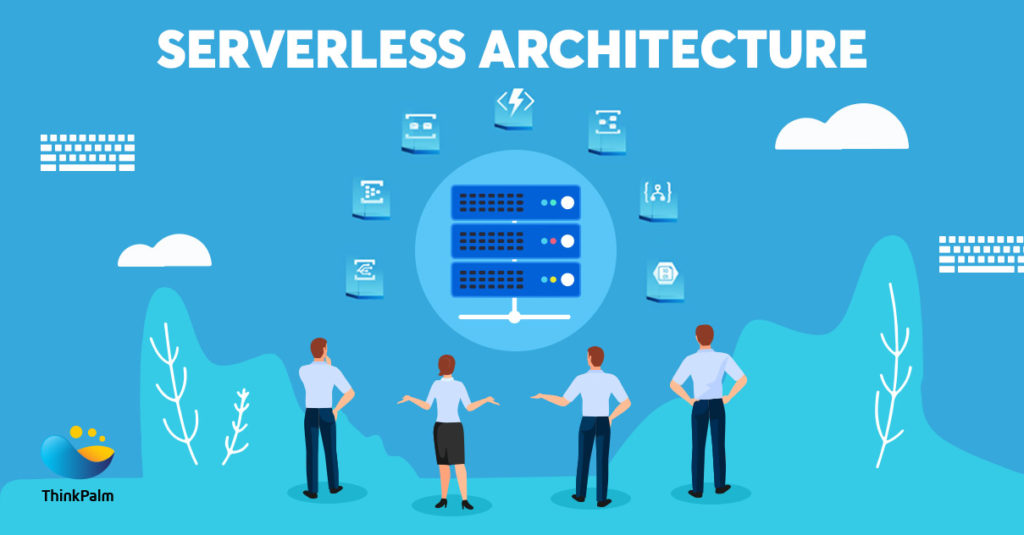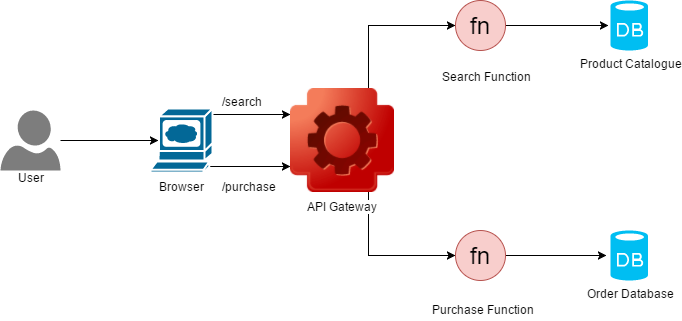
In the traditional server applications, we have a server that will handle all the requests from clients. The machine that hosts a website and delivers the site to our browsers are a very common example of this.
Nowadays an enterprise-sized server is very expensive. Also, the average life cycle of a server like this is about 5 years. This implies that in addition to the fact that you have to replace your machine at regular intervals, however in the meantime you are compelled by the restrictions of that machine.

For instance, if a site’s server does not have the ability to deal with it’s expanded load, the main conventional arrangements were either to buy another server to deal with the extra volume or to replace the current server with a superior model, the two of which are especially costly in both hardware expenses and labor.
Serverless architecture (or FaaS) is introduced to solve the above issues. Instead of having one machine to host a job, we can use publicly available services, such as Amazon Web Services (AWS), Microsoft Azure, Lambda functions and cloud-hosted databases, to replace the traditional server.
Serverless architecture is a model in which developers can think of the business logic instead of underlying server configurations.

All the advantages/disadvantages of serverless architecture are described below:
| Feature/Providers | AWS Lambda | Microsoft Azure Functions | Google Functions |
| Languages support | Node.js, Java, C#, Python, Ruby, C++ | Node.js, C#, F#, Python, PHP, Java | Node.js |
| Languages support with 3rd party | Any progrmaming language with Runtime API | With batch files can run anything | |
| Monitoring | Cloudwatch, Dashbird, Thundra, IOpipe | Azure Application Insights | Stackdriver Monitoring |
| Pricing | $0.20/million requests with 1 million requests per month for free | $0.000016/GBs, 400,000 GBs/month for free
— $0.20/million executions, with 1 million executions/month for free |
$0.40/million invocations with 2 million invocations for free
— $0.0000025/GB-sec with 400,00 GB-sec/month for free — $0.0000100/GHz-sec with 200,000 GHz-sec/month for free |
| Limits | Memory allocation range: Minimum 128 MB / Maximum 3008 MB
Ephemeral disk capacity: 512 MB Maximum execution duration/ request: 900 seconds |
Allows only 10 concurrent executions per function
No limitations on a maximum execution time limit |
Number of functions: 1000
Maximum function duration: 540 seconds Function calls per second: 1,000,000 per 100 seconds
|
Several businesses such as Nordstorm, AOL, Thomson Reuters, Netflix and Coca Cola are currently using Serverless architecture in manufacturing. This is a fresh way of building, deploying and managing software. Like microservices, it has many benefits for large and small apps.
A major benefit of a serverless-based architecture is the accessibility of developers. As we understand, finding good developers today is difficult and even harder in a particular programming language. With serverless computing, we can write functions with Nodejs, for one set of services, and in six months when fresh features are introduced, we can write the new features in Java. This type of flexibility has productivity disadvantages, but the lack of developers is a bigger disadvantage because the features won’t be created at all. Contact us today to implement a serverless-based architecture for your software.